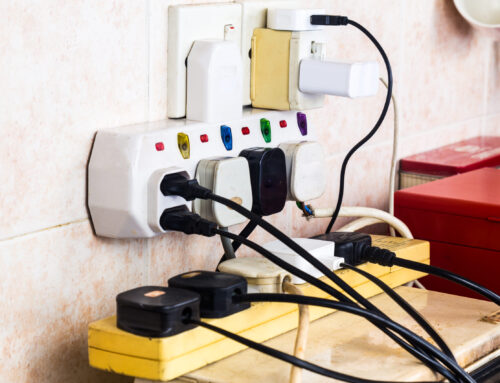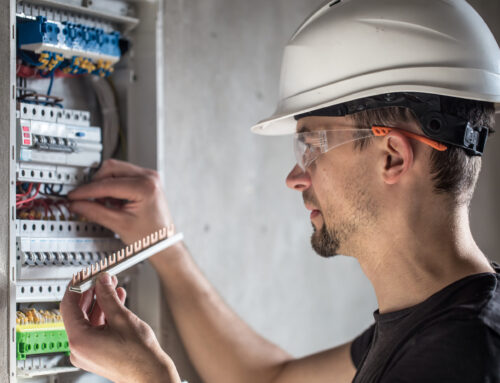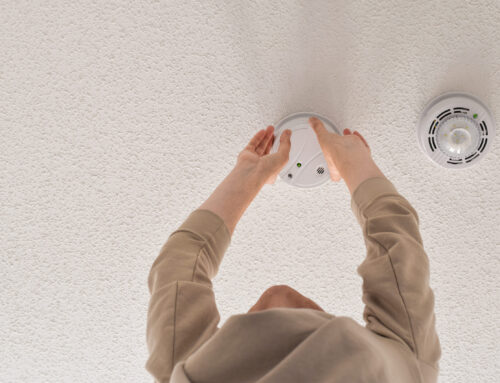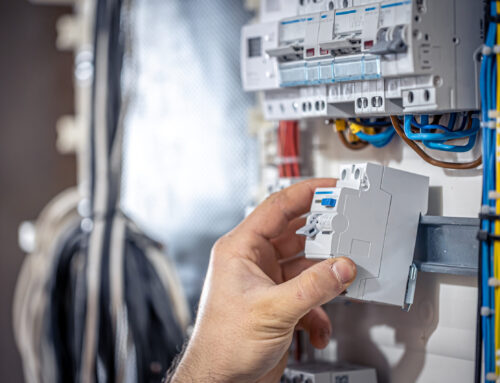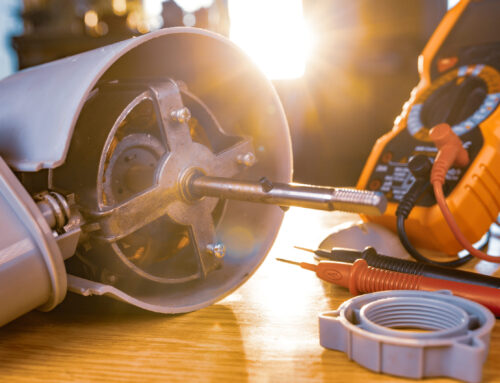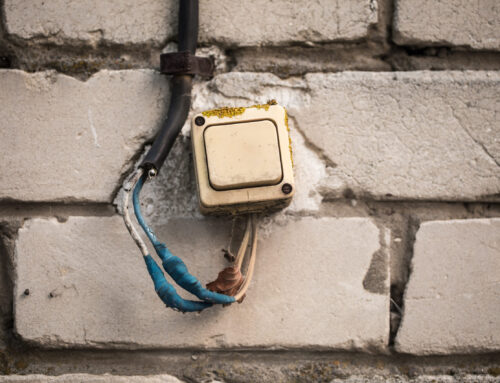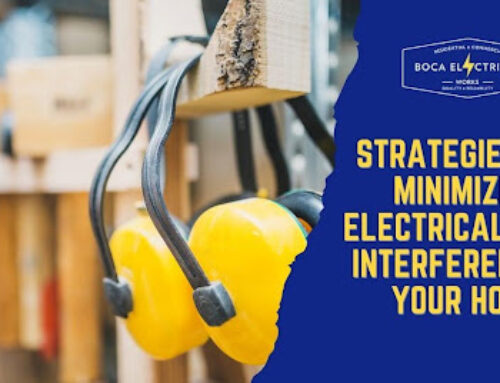DIY ceiling fan installation can seem deceptively simple but actually involves navigating a complex array of electrical wiring challenges and aesthetic considerations. This article offers a detailed guide aimed at demystifying the installation process, ensuring readers can tackle common issues with confidence and precision.
Understanding Ceiling Fan Installation Basics
Diving into the world of ceiling fan installation requires more than just enthusiasm. It demands a solid grasp of the basics to ensure safety, efficiency, and the desired outcome. This section illuminates the foundational steps and essential considerations, anchoring our discussion in the heart of residential electrical wiring.
Essential Tools and Materials:
- Electrical Screwdrivers: Specifically designed for electrical work to ensure safety.
- Wire Strippers: For cleanly stripping the insulation from electrical wires.
- Voltage Tester: To check for live wires and ensure a safe working environment.
- Ceiling Fan Mounting Kit: Typically includes all necessary hardware for installation.
- Safety Gear: Including goggles and gloves to protect against potential hazards.
Preliminary Safety Checks:
- Turn Off Power: Ensure the power is turned off at the breaker box to prevent electrical shock.
- Inspect Existing Wiring: Examine the electrical wiring in your intended installation spot. The presence of modern, up-to-code wiring is crucial for a safe installation.
- Choose the Right Fan for Your Space: Consider the size, style, and efficiency of the fan relative to the room it will occupy.
Common Challenges in Ceiling Fan Installation
Embarking on the ceiling fan installation journey unveils a spectrum of challenges that can daunt even the most seasoned DIY enthusiasts. From the complexities of electrical wiring residential systems to the nuances of ensuring a secure mount, this segment explores the common hurdles you might encounter. With a focus on offering “ceiling fan setup tips” and strategies for “fixing ceiling fan issues,” our aim is to arm you with the knowledge to navigate these obstacles with confidence.
- Electrical Wiring Compatibility: Mismatched or outdated wiring can lead to significant safety hazards and functionality issues with your new fan.
- Improper Mounting: Ensuring the fan is securely attached to the ceiling is critical to avoid future wobbles or, worse, accidents.
- Incorrect Assembly: Misinterpreting installation instructions can result in a fan that doesn’t operate as intended.
- Tool and Hardware Mishaps: Using incorrect tools or hardware can complicate the installation process or damage the fan components.
Overcoming Installation Hurdles with Expert Solutions

image for Common Challenges in Ceiling Fan Installation and How to Overcome Them
After identifying the common challenges in ceiling fan installation, the focus shifts toward harnessing expert solutions to navigate these obstacles smoothly. This section is dedicated to illustrating how professional insight and the right strategies can transform a complex installation process into a streamlined, efficient, and safe project. Incorporating expertise in “residential electrical troubleshooting” and leveraging “professional electrician services” are pivotal in ensuring that your ceiling fan not only enhances your space but does so reliably and safely.
Expert Strategies for Common Challenges:
- In-Depth Electrical Assessment: Before any work begins, a thorough evaluation of your home’s electrical system can identify potential compatibility issues or the need for upgrades, ensuring a seamless integration of your new ceiling fan.
- Precise Installation and Mounting: Utilizing specialized tools and techniques, professionals can secure the fan firmly to the ceiling, preventing wobbles and ensuring long-term stability.
- Customized Wiring Solutions: Addressing unique wiring configurations with custom solutions ensures that your ceiling fan is not only installed correctly but also optimized for your home’s specific electrical layout.
- Advanced Troubleshooting: Should any issues arise during or after installation, professionals equipped with the latest diagnostic tools and extensive experience can quickly identify and rectify these challenges, minimizing downtime and inconvenience.
The Value of Professional Electrician Services:
- Safety First: Electricians adhere to the highest safety standards, using industry-approved practices to protect your home and family from electrical hazards.
- Efficiency and Reliability: With expertise in “residential electrical troubleshooting,” professionals ensure that your ceiling fan operates at peak efficiency, providing optimal air circulation and lighting.
- Peace of Mind: Knowing that your installation has been handled by a certified electrician offers assurance in the reliability and safety of your ceiling fan, sparing you the worry of potential electrical issues.
- Warranty Preservation: Many ceiling fan warranties require professional installation. Utilizing expert services ensures that your investment is protected.
The Importance of Energy-Efficient Ceiling Fans
In an era where sustainability and cost efficiency are paramount, the selection of energy-efficient ceiling fans emerges as a critical consideration for homeowners. This section delves into the myriad benefits of opting for models designed with energy conservation in mind. By focusing on “energy-efficient ceiling fans,” we highlight not just the immediate advantages of reduced power consumption but also the broader impacts on environmental sustainability and long-term household savings.
- Reduced Energy Bills: Energy-efficient models are engineered to consume less electricity without compromising on performance, leading to noticeable reductions in your energy bills.
- Environmental Impact: Opting for a ceiling fan that requires less power contributes to lower carbon emissions, aligning with eco-friendly practices and supporting global efforts to combat climate change.
- Enhanced Performance: Modern energy-efficient ceiling fans often incorporate advanced technology that improves airflow and cooling efficiency, providing superior comfort with less energy output.
- Longevity and Durability: Designed with high-quality components, these fans are built to last longer, reducing the need for frequent replacements and contributing to waste reduction.
- Versatility and Design: Energy-efficient ceiling fans come in a variety of styles and designs, allowing homeowners to enhance their interior décor without sacrificing performance or environmental responsibility.
Why Professional Installation Makes a Difference
While the allure of DIY projects is undeniable, certain tasks, particularly those involving electrical components like ceiling fan installation, significantly benefit from professional expertise. This segment underscores the critical advantages of entrusting your ceiling fan installation to seasoned professionals. By emphasizing “professional electrician services,” we aim to illuminate the unparalleled safety, warranty advantages, and overall peace of mind that come with professional involvement.
Advantages of Professional Ceiling Fan Installation:
- Ensured Safety: Electrical installations carry inherent risks, from electrical shocks to potential fire hazards. Professional electricians have the training, experience, and tools to navigate these dangers, ensuring a safe installation process and operation.
- Warranty Preservation: Many ceiling fan manufacturers stipulate that a qualified electrician must perform the installation to maintain the warranty. Professionals ensure all guidelines are followed, preserving your warranty and investment.
- Expert Troubleshooting: Encountering unforeseen issues during installation is common. Professionals bring their extensive “residential electrical troubleshooting” skills to swiftly address and rectify these challenges, ensuring your fan operates as intended.
- Quality Assurance: With a professional, you’re not just paying for the installation but also the assurance of quality workmanship. This ensures that the fan is correctly balanced, securely mounted, and optimally wired, minimizing operational issues and extending the fan’s lifespan.
- Time and Cost Efficiency: DIY projects can often become more time-consuming and costly than anticipated, especially when redoing work or fixing mistakes. Professionals streamline the installation, saving you time and potential extra costs.
Key Takeaways
The article highlights the complexity of ceiling fan installation, emphasizing the need for a thorough understanding of electrical wiring, the benefits of energy-efficient models, and the value of professional installation services. It guides readers through each step of the installation process, offering technical insights and practical solutions to ensure safe, efficient, and visually appealing outcomes.
People Also Ask
These are some common questions that provide additional value and capture a wider audience.
Can I install a ceiling fan where a light fixture exists?
Absolutely. Replacing a light fixture with a ceiling fan is a common upgrade in many homes. Ensure the electrical box is fan-rated to support the weight and vibration of the fan. If unsure, consulting with a professional electrician, who adheres to the National Electrical Code (NEC) standards, can provide peace of mind and ensure safety.
What do I do if my ceiling fan wobbles after installation?
A wobbling ceiling fan often results from an imbalance in the blades or improper installation. You can use a balancing kit, typically included with your fan, to adjust the blade weight. For persistent issues, it’s advisable to consult a professional to check the installation integrity and ensure the fan is securely attached to the ceiling, as per industry best practices.
How do I choose the right ceiling fan size for my room?
Selecting the appropriate ceiling fan size depends on your room’s square footage. A general rule is to use a 36-42 inch fan for up to 100 square feet and a 52-inch fan for rooms up to 400 square feet. For larger spaces, consider multiple fans to ensure efficient air circulation. This guideline is supported by the American Lighting Association, ensuring optimal comfort and efficiency.
Can ceiling fans be installed on sloped ceilings?
Yes, ceiling fans can be installed on sloped ceilings using a special angled mount adapter, which allows the fan to hang horizontally. It’s important to check the fan’s specifications for maximum slope compatibility. Professional installation is recommended to address the unique challenges of sloped ceiling installations, ensuring adherence to safety standards.
Is it possible to install a ceiling fan without existing wiring?
Installing a ceiling fan without existing wiring is more complex but achievable, often involving running new electrical wiring and installing a new switch. This task requires understanding of electrical systems and compliance with local building codes. For safety and assurance, hiring a licensed electrician who can navigate these requirements and ensure a safe, code-compliant installation is strongly recommended.
Elevate Your Home with Expert Ceiling Fan Installation
Boca Electrical Works leverages over 38 years of experience to deliver exceptional electrical services in Boca Raton and beyond, offering expertise in everything from residential wiring to the installation of ceiling fans and surge protectors. As a family-owned business, we’re dedicated to enhancing your home’s safety and comfort. We encourage you to visit our website for more information and to contact us for tailored advice. Choosing us through Softlist not only gives you access to premium services but also supports our mission, contributing to the wealth of resources we offer as an affiliate partner.



